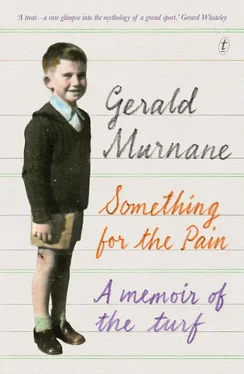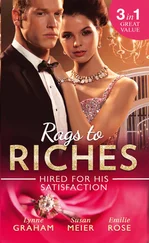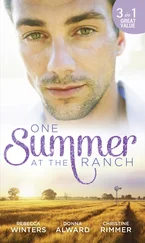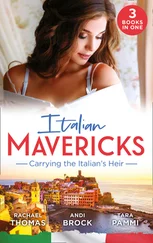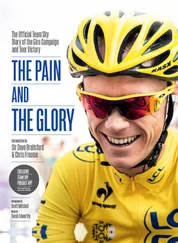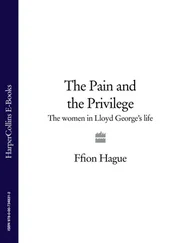At that time, I had a friend in a senior position in the Victorian Railways. He told me, soon after the AJC Derby, that the Railways had been asked to provide customised transport between Sydney and Melbourne for the young racehorse Summer Fair which, for some reason, could not endure road travel. My friend told me in addition that someone connected with Summer Fair had whispered to someone in his, my friend’s, office that Summer Fair was coming to Melbourne to contest the Caulfield Guineas, which he would not win, and afterwards the Caulfield Cup, which he would most assuredly win. I thanked my friend for his information and resolved to have a small bet on the three-years-old in the Cup. My friend was not a racing man, and I had never put much faith in second- or third-hand tips.
Summer Fair ran well in the Guineas without winning. That need not have meant that his connections had had the horse deliberately beaten. The Guineas was a race over 1600 metres. The AJC Derby, run not long before, was over 2400 metres. The large difference in distances could easily have caused Summer Fair to be beaten on his merits in the much shorter Guineas.
On Caulfield Cup Day, 1961, I was in a reserved box in the grandstand. I had been invited there by a former colleague at the Royal Mint, where I had worked four years before. Warwick Murray had known nothing about racing but had become a part-time punter after noting the achievements of Martin Dillon, whom I’ve mentioned several times already. Reserved boxes were a recent innovation at several Melbourne courses. They seem primitive now, when diners sit at terraced tables behind glass, but I felt I was sampling the latest in luxurious living while I lolled against the canvas walls of our little enclosure and sent the waiter scurrying for cold beer after cold beer. Before the Cup, I went down into the ring and had a pound or two on my fancy, whose name I’ve forgotten, although I remember that its rider was George Moore; its colours were predominantly purple, with orange-and-white markings; and its odds were about six-to-one. I recall also that it finished near the rear in the Cup. The horses were on their way to the barrier before I remembered Summer Fair. I had come to the races intending to have five or ten shillings on the three-years-old but had forgotten all about the bet. I went in search of the nearest tote window. When I found it, the young woman across the counter told me that the minimum bet was a pound. This was in the part of the grandstand occupied exclusively by reserved boxes. We loungers in the boxes were deemed by the club, it seemed, to be above betting in shillings. I must have had a fair amount of beer by then. I was not going to be thought a cheapskate by the young tote employee. I bet a pound win-only on Summer Fair. The young horse had been about twenty-to-one with the bookmakers, but, for whatever reason, he lacked for support on the tote. He won the Cup with not much trouble and paid forty-to-one on the tote. I had won the equivalent of three weeks of my teacher’s salary on him.
Summer Fair was not my only winner that day, and I left the course more than fifty pounds better off than I had entered it. My lean-to in Wheatland Road was less than two kilometres from the grandstands at Caulfield. My custom was always to walk to and from Caulfield on race days. I walked without interruption to the racecourse but on the way home I stopped for two or three or four or five beers in Macnamara’s Caulfield Club Hotel. If I had won a goodly amount, I sometimes bought the smallest crayfish on sale in the fish shop near Macnamara’s and devoured it soon after arriving home. The crayfish had to be small, and I had to devour it soon because I had no fridge in my quarters.
I don’t recall having bought a crayfish after Summer Fair’s Caulfield Cup, but I do recall having drunk more than my usual amount of beer at Mac’s, as it was familiarly known. I don’t recall walking home. I don’t even recall the first and by far the most urgent task that I would have had to perform after having entered my little apartment — my hurrying to the sink and emptying my swollen bladder. Afterwards, I would have run a copious amount of water down the sink, but I recall none of this. What I do recall is my sitting down in the middle of the room and counting out my winnings. Even though I could hardly claim to have backed Summer Fair as a result of my own assessment of the field, what mattered was the end result, and I took pleasure in counting out the wad of notes in my pocket.
Nothing else from that day stays in mind. What I next recall is my meeting with Mrs Smith a few days later. Was it an accidental meeting, or had she ambushed me at the letterbox or in the driveway? Mrs Smith was not a racegoer, but the Great Age of Racing was still not quite at an end and suburban wives such as Mrs Smith still kept abreast of racing results in the spring and autumn carnivals. I don’t recall which of us mentioned the Caulfield Cup, but I can never forget my telling Mrs Smith that I had won a goodly sum on Cup Day and her replying that she knew this already; that she and Glenys had overheard me from the kitchen of her house on the evening of Caulfield Cup Day while I counted out my winnings.
Excuse me , as they say nowadays, or used to say recently. Here we have Mrs Smith and Glenys poised with ears pricked in their kitchen while the young fumbling drunk in his room nearby flicks the corners of his banknotes. Now, what is the comparative loudness of a man’s flicking the corners of a few banknotes in the middle of his room with the same man’s pissing furiously from a bursting bladder into a stainless-steel sink in the corner of his room nearest to a pair of huddled, listening females? Even while Mrs Smith was talking to me about my success with Summer Fair, I understood that I had been sprung. My shabby secrets were known. It was time to think of moving on.
22. Sir Flash and the Borderers
THE FAMOUS THREE-DAY racing carnival at Warrnambool in May attracts visitors from all over Australasia. In the 1950s, and for a few years afterwards, a lesser two-day carnival was held in January, complete with hurdle races and a steeplechase. It could not be compared with the May event, but good crowds attended, many of them holidaymakers staying in Warrnambool or other coastal centres. I was like most people in associating Warrnambool with the ocean, but I had never taken much interest in the flat sandy beaches around the city. My father’s family had been settled for nearly a century in the Mepunga district, about twenty kilometres east of Warrnambool. There, the coast consists of tall cliffs broken occasionally by small coves and bays. As a boy, I enjoyed climbing among the fallen boulders and the rock pools at the edges of some of these bays, but the ocean itself repelled me, and I’ve kept well away from it during all of my adult life. During my brief holidays on my grandfather’s farm in the 1940s, I was more interested in another sort of ocean. Whenever I stood on a tall cliff above some or another bay, I got inspiration not from the blue-green Southern Ocean reaching away towards the South Pole but from the yellow-brown ocean of land reaching towards places I had seen only from a distance, if at all: the plains of the Western District to the north and the north-east of Warrnambool or, away to the north-west, a mostly level landscape where I had never been and where the towns were for me mere names on a map — Hamilton, Coleraine, Casterton…
I have always delighted in the atmosphere of the mounting yard. Nowadays, a concern for safety has resulted in owners and trainers and jockeys having to confer before a race in a railed enclosure well away from the parading horses, but for many years I could look into the mounting yard before a race and could see, in the open space bounded by the circling horses, knot after knot of persons, each surrounding a brightly clad jockey. Before a race, anything could be deemed possible. The shortest-priced favourite might be beaten; the rank outsider of the field might get up in a photo finish. The claims of no contender could be dismissed. The plans and tactics being discussed among any one of the knots of people might soon come to fruition, and the colours displayed at its centre might finish ahead of all the others. Those colours, I need hardly say, had a special interest for me when I saw them in the mounting yard before a race. I could read all sorts of things into sets of racing colours before a race. One set might seem to boast; another to issue a challenge; and still another to make a quiet but firm statement. I was easily able to see some sets of colours as representing particular regions or places or even something as vague as a way of life. And, of course, any set of colours was first of all connected with a trainer or an owner: a weather-beaten veteran trainer or a fresh-faced newcomer; an owner new to racing or someone from the third generation of an old racing family — someone using colours devised by his grandfather.
Читать дальше
